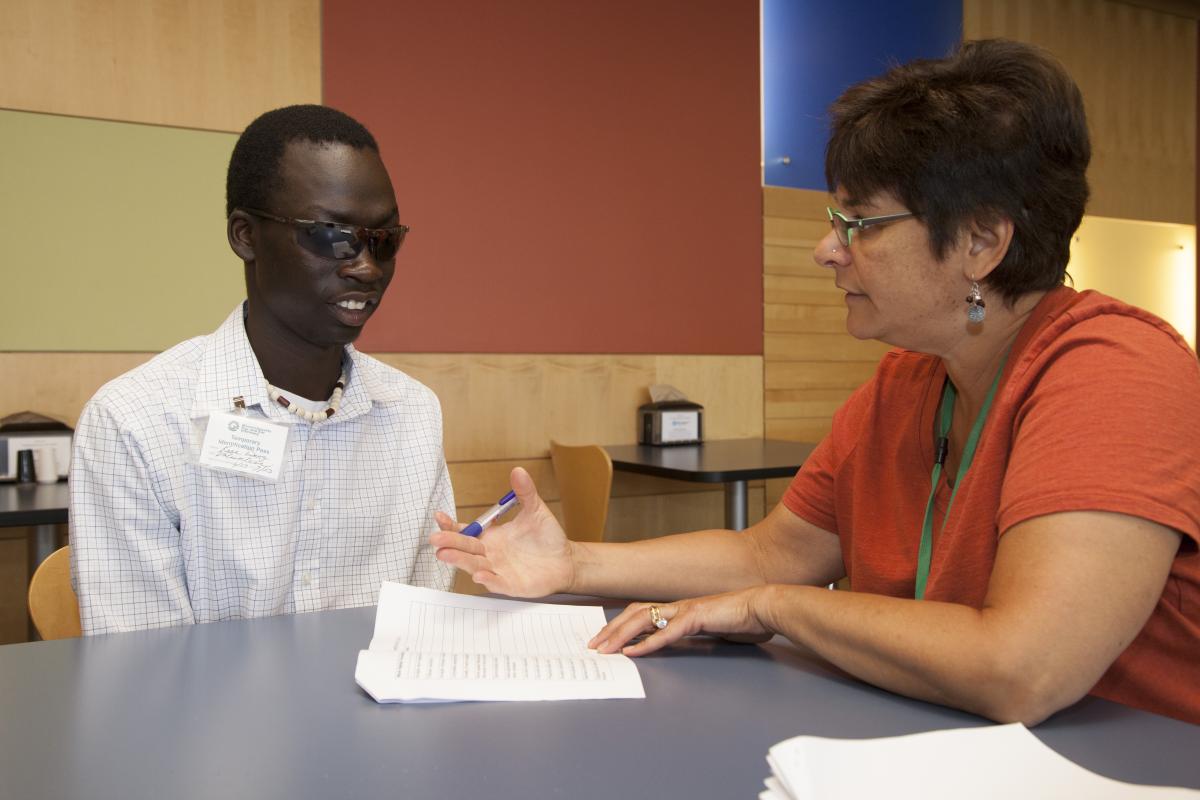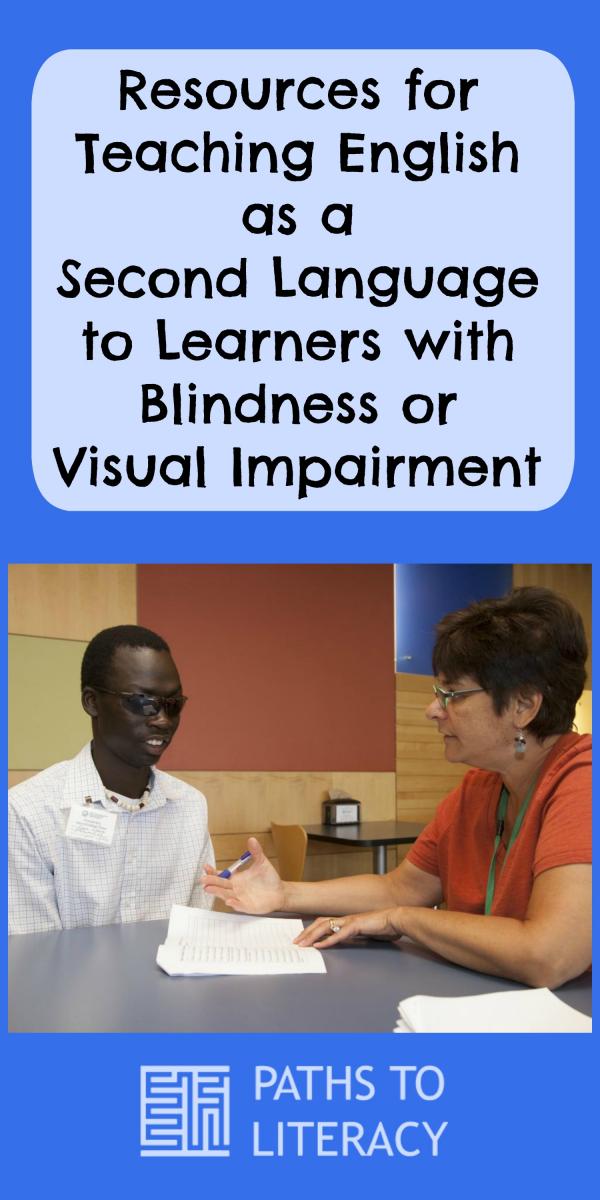Resources for Teaching English as a Second Language to Learners with Blindness or Visual Impairment
Submitted by Scott Baltisberger on Jan 31, 2019

As the number of students from non-English speaking backgrounds increases, teachers of students with visual impairment will see a corollary rise in their caseloads of children with language learning needs. The following information may be helpful to share with ESL teachers working with those students.
General Ideas
- Perhaps a primary issue is that ESL instruction typically makes heavy use of visual materials such as photos, pictures, movies and videos, flash cards, demonstrations and pantomime. These strategies work very well with sighted learners because they connect the language with concrete, real-life examples.
- The challenge is that these strategies rely on materials that are presented at a distance from the learner and are accessed though vision and hearing. Individuals who are blind, however, require hands-on materials that can be explored by sense of touch; distance materials by themselves will not provide much meaningful information.
- There are accommodations in instruction that can be helpful. For example, students can use "real" objects, for example an actual pot or pan instead of a picture of a pot or pan, when learning vocabulary for cooking. By touching and exploring the object, the student forms a connection between the word and the object. This is approach is actually one that will work well for all students, regardless of degree of vision or blindness, in learning the language. For objects that are too large fit into a classroom, such as a car or bus, miniatures can be used. However, learning will be enhanced if the miniature is initially paired with a visit to the parking lot to experience an actual car or bus. This type of "real world" experience is also a great way to provide meaningful, context-rich educational experiences.
- In regards to the written form of English, it is essential that the student have some access to braille, either with a braille writing machine or a slate and stylus. It is extremely difficult to learn the written rules of any language through listening only. Again, there must be a hands-on, direct experience with the letters and words. There is a braille code for most major languages and while these may be quite different, the differences are no more difficult to learn than in learning the visual writing systems. If a student is fluent in the braille code to his or her first language, he or she should be able to begin learning the code in English.
Internet Links

Sharon Monthei works at BLIND, Incorporated, one of the three training centers operated by the National Federation of the Blind, where she teaches English to refugees and immigrants.
Chock Sing answers questions about teaching English asked by people who have no experience working with the blind.
Chen Guangcheng describes his experiences as a blind learner of English as a second language.
From the ESL website “English Club”, info about teaching English to the visually impaired (VI). You will find a brief description of different types of VI learners as well as some challenges of and tips for teaching them.
Paths to Literacy: English Language Learners
Website devoted to instructional strategies for learners who are blind or visually impaired which has a number of articles on English as a Second Language.
Books
A couple of books on braille instruction from American Foundation for the Blind address the needs of the blind ESL student. They can be ordered from American Printing House for the Blind or from Amazon.
- Instructional Strategies for Braille Literacy. AFB Press. Chapter 6: "Teaching Braille Reading and Writing to Students Who Speak English as a Second Language".
- Beginning with Braille. AFB Press. "Teaching Braille to English Language Learners" (pp. 302-309)


